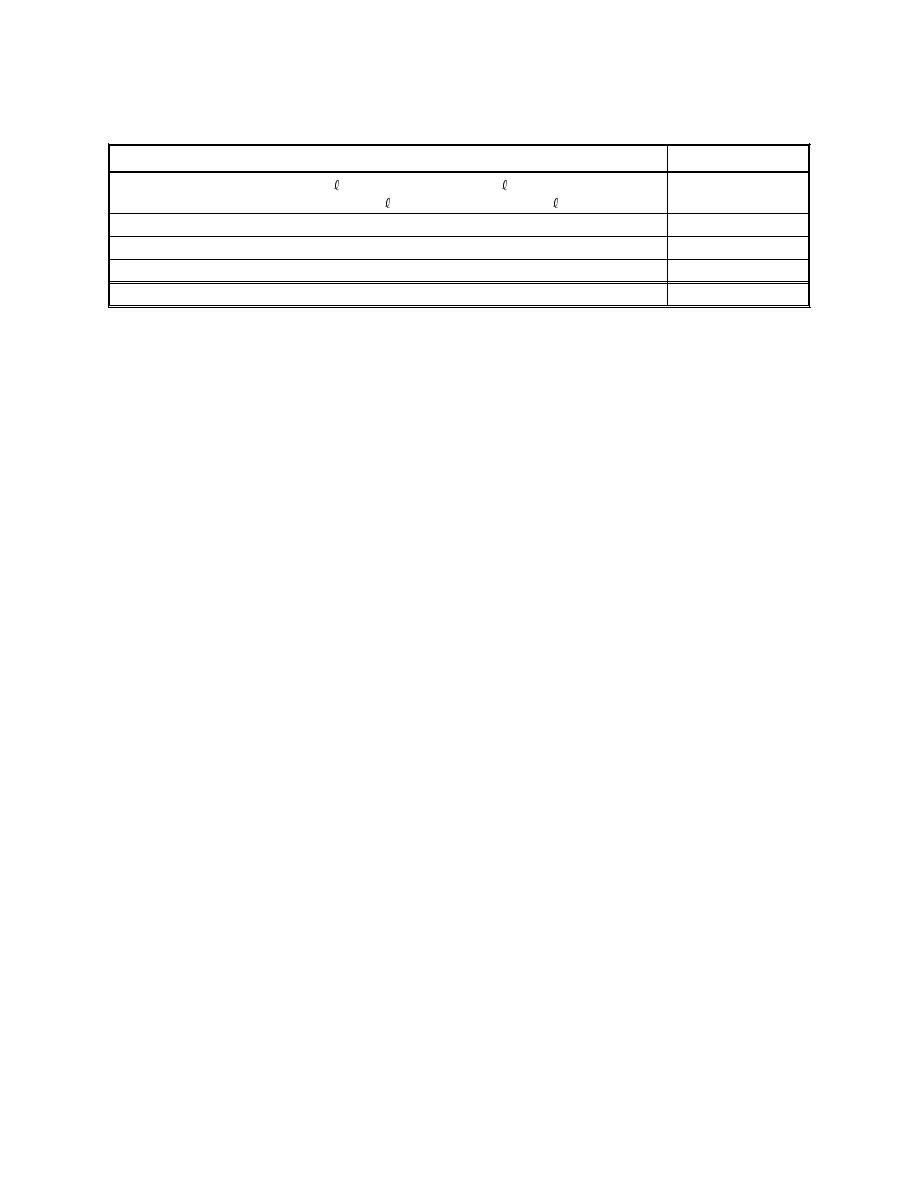 |
||
|
|
||
|
Page Title:
Cost per acre to control napier grass and Spanish needle is estimated over a 2-year period |
||
| |||||||||||||||
|
|
 ERDC TN-DOER-C20
March 2001
Cost per acre to control napier grass and Spanish needle is estimated over a 2-year period at:
Item
Cost
Herbicide (Round-Up) 2.3 102 m /ha (32 oz/acre) @ $55/3.8 (128 oz (1 gal)) (6 times)
$ 82.50
(or Herbicide (Round-Up type*) 2.3 102 m /ha (32 oz/acre) @ $36/3.8 (128 oz (1 gal))
54.00)
Application tractor/driver/wiper 0.4 hr/acre @ $ 50/hr (6 times)
120.00
Grass mowing: 0.16 hr/acre @ $ 50/hr (3 times)
24.00
$226.50 (or $198.00)
* The generic equal to Round-Up is Gly-Flow.
This 2-year cost is approximately equal to the current cost for 2 years of mowing the existing
vegetation on the Herbert Hoover Dike system without control of the weeds.
Other equipment has been developed using the same principles of wiping herbicide on plant leaves
versus spraying. A demonstration was conducted in 1999 in cooperation with Monsanto/Weedbug,
using newer equipment called the Weedbug. This equipment, developed in Australia, uses nylon
rope instead of the grit panel as the carrier for the herbicide. The saturated rope spins around in a
disk-shaped applicator, scratches the plant leaves, and puts herbicide in the scratches for a total kill
of the plant. The centrifugal force keeps the ropes saturated equally for a uniform distribution of
the herbicide. This is an improvement over the wiper panel, since the tubes on the wiper panel can
sometimes get clogged and result in uneven distribution of the herbicide application, producing
streaking of the missed plants. These areas are usually eliminated in subsequent wipings. A
demonstration area was established near Canal Point, FL, with the Weedbug applicator (Figures 19
and 20). Again the napier grass was almost totally killed after two wipings and Spanish needle
became established (Figure 21).
Additional wiping and mowing were conducted and eventually Bermuda grass recovered (Figure 22)
and spread over the area. The untreated control plot was covered with napier grass and Spanish
needle (Figure 23). Desirable vegetation is usually present on the dike, but suppressed by the more
dominant and aggressive undesirable napier grass. Once the aggressive undesirable vegetation is
eliminated, other plant species present get an opportunity to grow. On the Herbert Hoover Dike
system, the next plant species to overgrow the areas is Spanish needle. After it is controlled, the
more desirable vegetation like Bermuda grass and Bahia grass recover and become dominant. It
will take 3 to 4 years of wiper/mowing management to reverse the vegetation progression that has
occurred over the past 10 or more years on the Herbert Hoover Dike. A combination of herbicide
wiping and reduced fertilizer applications will return the dike system to more desirable vegetation
that will be easier to manage. In addition to this weed control program, other technologies such as
RSMT are being demonstrated and can improve the long-term fertility of the droughty dike dredged
material/soil. The conversion to perennial peanut, which requires only potassium fertilizer and does
not require mowing, will substantially reduce fertilizer and mowing costs for vegetative mainte-
nance of this dredged material dike system.
Wilmington, NC. The Eagle Island CDF was totally covered with 3-m- (10-ft-) tall common reed
(Figure 1). The aboveground stems and tops (3 m (10 ft) tall) were cut with a box blade and placed
into piles for burning or composting. Because burning can contribute to poor air quality, composting
4
|
|
Privacy Statement - Press Release - Copyright Information. - Contact Us - Support Integrated Publishing |